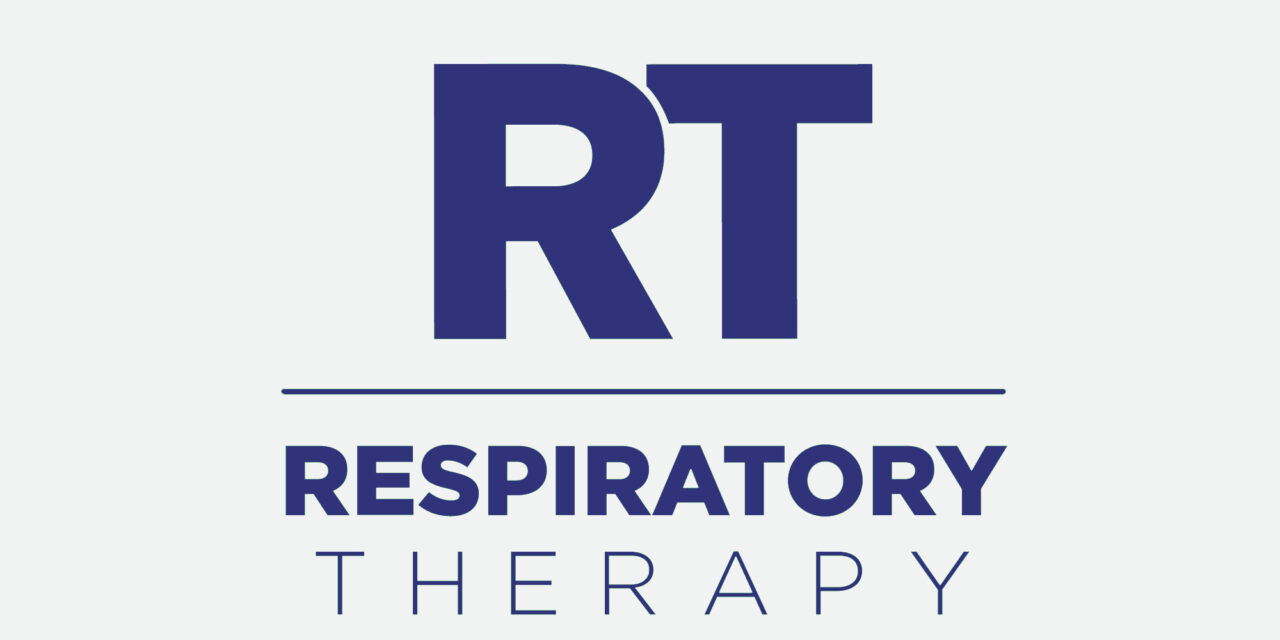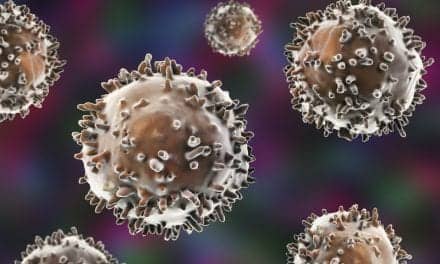K. Frank Austen, MD, has received the Eleventh Annual Warren Alpert Foundation Prize from New York philanthropist Warren Alpert, chairman of Warren Equities Inc, New York.
Austen received the $100,000 award at a reception held in New York. The foundation’s Scientific Advisory Committee—including experts from Harvard Medical School, Boston, and Massachusetts Institute of Technology, Cambridge—chose Austen because of his comprehensive work and dedication relating to asthma. He and two colleagues conducted the first human tests of man-made leukotrienes, the major cause of asthma, on themselves. Austen’s group is the first to successfully clone the human genes responsible for making leukotrienes. This has enabled them to compare genes in asthmatics and nonasthmatics and analyze the flaws that cause the disease. Austen’s research has led to the development of the first new treatments for the disease in 20 years. As a result of his work, four medications are currently being used by an estimated 3.5 million asthmatics worldwide.
“It is a great privilege and honor to be recognized by the Warren Alpert Foundation and the advisory committee,” Austen says. “The drugs developed from our studies are the first to treat a causative factor of bronchial asthma and not just the symptoms. After 4 decades of commitment to an area of basic research, it is rewarding to see the goal of clinical benefit being achieved for the management of bronchial asthma.”
Austen is the director of the Allergy Program and Inflammation and Allergic Diseases Research Section, Division of Rheumatology, Immunology and Allergy, Pulmonary and Critical Care Medicine, Brigham and Women’s Hospital, Boston, and Theodore Bevier Bayles Professor of Medicine at the hospital and Harvard Medical School.
Report Predicts Sales of Therapies To Prevent RSV To Increase
A new report from Decision Resources Inc, Waltham, Mass, predicts that sales of therapies to prevent and treat respiratory syncytial virus (RSV) in the world’s largest pharmaceuticals markets will increase to $240 million by 2008, up from $125 million in 1998.
The report, entitled “Respiratory Syncytial Virus,” examines the etiology and pathophysiology of RSV. It discusses the epidemiology of RSV infection and disease in seven markets, which include the United States, France, Germany, Italy, Spain, United Kingdom, and Japan. It also reviews current therapies, diagnostic methods, and medical practices in each of the markets. The report also discusses unmet medical needs and emerging therapies for RSV, concluding with major-market sales projections for these therapies over the 1998-2008 forecast period.
Respiratory Syncytial Virus is part of “Infectious Disease,” a multiclient service that evaluates the commercial potential of drugs that are now in research and development to treat bacterial, viral, fungal, and parasitic infections.
Decision Resources Inc is a leader in research publications, advisory services, and consulting designed to help clients shape strategy, allocate resources, and master their chosen markets. For more information, call (781) 487-3753.
Inadequate TB Control Programs in Sub-Saharan Africa
Soaring HIV infection rates are contributing to the tuberculosis (TB) epidemic in sub-Saharan Africa, forcing world health policy makers to better account for the intertwining of the two diseases, according to a report from Johns Hopkins University, Baltimore. Treating TB in HIV-infected patients is more challenging than treating TB in HIV-negative patients, and current efforts by the World Health Organization (WHO) do not address these concerns.
“If decision-makers ignore the clear trends in sub-Saharan Africa and continue with current approaches, the TB situation in countries with high rates of HIV is likely to worsen,” says Richard E. Chaisson, MD, professor of infectious diseases, Johns Hopkins School of Medicine, and an author of the report.
Chaisson and coauthor Kevin De Cock, PhD, director of the division of HIV and AIDS prevention at the Centers for Disease Control and Prevention, Atlanta, point to the examples of New York City and Baltimore, which in recent years implemented policies that decreased the incidence of TB among the high risk groups, including those with high rates of HIV infection. Chaisson believes that similar measures could reduce the rate of TB transmission among the large HIV-infected populations in Africa as well. According to WHO, two-thirds of the world’s HIV-positive population, or more than 20 million people, live in sub-Saharan countries like Kenya and Zimbabwe. An estimated one quarter to one half are coinfected with TB.
The report, which appeared in the June issue of the International Journal of Tuberculosis and Lung Disease, recommends the following:
- all identified HIV-positive patients (except those with symptomatic, or active, TB) be treated with isoniazid, a TB prevention drug;
- screening for TB in hospitals, clinics, HIV testing and counseling centers, and prisons to help identify people with both active and latent TB, as well as screening of housemates and family members of symptomatic TB patients, and households of HIV-positive patients;
- better tracking of TB outbreaks among HIV-positive patients to target resources more efficiently;
- separating HIV-positive patients from TB patients in hospitals; and
- providing well-ventilated and sunlit TB wards to help reduce transmission.
Experts Discuss Antibiotic Resistance in Respiratory Tract Infections and TB
The threat of antibiotic resistance and its impact on global public health was the topic reported on recently by leading infectious disease researchers and clinicians.
Under the auspices of Columbia University’s Joseph L. Mailman School of Public Health, New York, the program, entitled “Deadly Respiratory Tract Infections: Complacency or Control,” provided a clinical update and public health response for two deadly types of infectious diseases, respiratory tract infections and tuberculosis (TB). New data were also presented from the ongoing SENTRY Antimicrobial Surveillance Program, a worldwide study of infectious disease pathogens, which revealed that the rate of penicillin resistance in Streptococcus pneumoniae, the most common cause of respiratory tract infections, continues to increase. The resistance rate was less than 4% in the 1980s and has skyrocketed to nearly 40% currently.
The findings also provide evidence that commonly used antibiotics are no longer eradicating the most prevalent bacteria in respiratory tract infections. Of equal importance is the inappropriate use of antibiotics for diseases such as viral infections. The use of an antibiotic when not indicated gives bacteria an opportunity to build an immunity to the medicine, rendering it ineffective even when later used for a bacterial infection.
“While resistance has been around since the discovery of antibiotics, as recently as 10 years ago, we could count on our arsenal of antibiotics to control the most frequent bacterially caused respiratory tract infections,” says Ronald N. Jones, MD, Department of Pathology, University of Iowa School of Medicine, Iowa City, and lead investigator of the SENTRY program. “But this is no longer the case. In regard to S. pneumoniae, we concur with the World Health Organization (WHO) report last week calling for the development of newer antibiotics, as well as more appropriate use of currently available antibiotics.”
TB is also a matter of public health importance: more than 1,500 cases are reported annually in New York City, according to Ariel Pablos-Méndez, MD, MPH, assistant professor of epidemiology, Joseph L. Mailman School of Public Health, and assistant professor of medicine at Columbia University College of Physicians and Surgeons. “We all have a responsibility—physicians, the public, the media—to learn how we can help prevent the spread of resistance to our current antibiotics.”
A recent report from WHO assessing the economic impact and rate of infectious diseases around the world also discussed respiratory infections.
Developing countries are the most threatened and six deadly diseases are the main killers: TB, malaria, measles, diarrhea, AIDS, and acute respiratory disease, such as pneumonia and influenza. While many physicians have low-cost methods of preventing many of these illnesses and good treatments are available for some, bacteria and viruses are evolving to resist therapy. By missing this “window of opportunity,” according to David Heymann, MD, WHO infection chief, the result could be catastrophic for the next century.
“We have the tools, but they are becoming ineffective so we have to use them now,” Heymann says. “This is a wakeup call.”
The report also aims to convince governments that illness causes poverty just as much as poverty causes illness, so that national policies reflect sound health programs.
Smog May Be To Blame for Asthma-Related Breathing Problems
Heavy smoking may worsen the effects of ozone-related (smog) breathing problems in adults with asthma, according to a study published by the American Lung Association.
Of the 1,216 inner-city adult asthmatics in New York City who participated in the study, heavy smokers had a 72% increased risk of an ozone-associated emergency department visit for asthma on the highest ozone day compared with a very low ozone day.
The study found that current or past heavy cigarette use was a predictor of emergency department visits for asthma following days with high ozone levels. The study was the first to assess the relationship between personal tobacco use and ozone-associated illness due to asthma.
AARC To Allow Sales of Products and Equipment at Conference; Introduces New Manual
For the first time in history, the American Association for Respiratory Care (AARC), Dallas, will provide attendees and exhibitors the opportunity to negotiate sales of products and equipment at its upcoming International Respiratory Congress. The AARC and Tech Ed Cardiopulmonary Diagnostics Specialists, Mason, Mich, have also joined forces to provide a new manual on CD ROM.
More than 200 equipment manufacturers, pharmaceutical companies, service organizations, and supply companies will be present at the conference to be held December 13-16, 1999, at the Las Vegas Convention Center. Many of the exhibits will provide special show discounts to attendees as well as hands-on demonstrations.
“We’ve always had an extremely enthusiastic response to tour exhibitor companies, and attendees are always very pleased with what they see and learn. However, many people have asked for the added benefit a ‘selling show’ offers,” says Sam Giordano, AARC executive director. “We decided to take that approach this year to make attending the meeting even more cost-effective.”
AARC also announces its new training and competence manual entitled Diagnostic Training and Competence Assessment Manual: Pulmonary and Noninvasive Cardiology. The manual was designed to assist in the training and ongoing in-service education of professionals in the noninvasive and cardiopulmonary laboratory setting.
The manual was created by Susan Blonshine, BS, RRT, RPFT, a member of RT’s Editorial Advisory Board, and Jeff Johnson, MS, and can be used as the basis for course development, training programs, orientation, and competence assessment for pulmonary diagnostics such as indirect calorimetry, venipuncture, and static lung volumes. The manual also features topics for noninvasive cardiology procedures such as transtelephonic pacemaker evaluation, graded-exercise testing, electrocardiography (ECG), ambulatory ECG or Holter monitoring, and high-resolution signal-average ECG.
The manual is available on CD ROM and can be tailored to individual institutions. The manual (item #PA99) is $267 for AARC members, and $289 for nonmembers, plus $8.85 for shipping and handling. To order, contact AARC’s Order Fulfillment Department at (972) 243-2272.
Respiratory Disease Program Shows Promising Results
A 50% decrease in emergency department visits and a 49% decline in unscheduled doctor visits for asthma treatment are among the results of an innovative program to battle respiratory disease.
Known as Breathe Easy™, this educational treatment program is a partnership between Medical Mutual of Ohio, Cleveland, and National Jewish Medical and Research Center, Denver. The free program is available to Medical Mutual cardholders and is designed to empower patients with mild, moderate, and severe respiratory illnesses. Breathe Easy also strives to optimize each participant’s quality of life, reduce severe respiratory flare-ups, and contain costs. The program enrolled patients with chronic obstructive pulmonary disease (COPD) in December 1998, but results are not yet available.
The program provides both asthma and COPD patients with four to six educational telephone interviews with respiratory care nurses; and a 24-hour phone hotline; transmission of breathing capacity results over the phone; home health care visits; and comprehensive information about respiratory disease. As a result of the program, analysis of the asthma data collected revealed that adults missed 36% fewer workdays, children missed 4.5% fewer days from school or day care, and hospitalizations decreased by 34%. Of those enrolled, 98% were satisfied with the program.
“One of the most empowering advantages for Breathe Easy members is the individual action plan for each participant,” says David Tinkelman, MD, Vice President of Health Initiatives for National Jewish Medical and Research Center. “In addition, National Jewish provides physicians in the program with telephone consultation services via a customized 800 number and Internet access.”
Medical Mutual members may enroll or get additional information on Breathe Easy by calling (888) 224-6906, or visit the company’s Web site at www.mmoh.com.
Lung Cancer Not More Aggressive in Patients Under 50 Years of Age
Overall rates of lung cancer in patients under 50 years of age are similar to those of older patients, suggesting that the disease is not inherently more aggressive among younger men and women, according to a study published in the May issue of Chest. According to the study, lung cancer patients under 50 years of age were diagnosed with more advanced lung disease.
Gregory P. Kalemkerian, MD, previously with the Barbara Ann Karmanos Cancer Institute, Detroit, along with six associates from Wayne State University, Detroit, studied 1,012 patients (126 involving patients under 50) who had been diagnosed with lung cancer between 1990 and 1993. Both the older and younger subjects used tobacco extensively, with more than 90% of the patients being regular smokers. The median cumulative cigarette consumption was 30 pack-years.
The study revealed that the average survival for younger patients was 13 months compared to 9 months for older patients. Slightly under 5% of the younger patients under 50 years of age were diagnosed with less advanced or local disease (stage I and II) as contrasted to 19.7% of older patients. Among the 55 younger patients with advanced lung cancer (stage IV), 60% had brain involvement, 49% bone, and 15% the liver and adrenal gland. The 1-year survival rate for younger patients was 52.4% and for older patients, 41.4%. However, choosing surgery to remove the cancer was significantly higher in younger patients, with 25% opting to resection the cancerous portion of the lung. Most younger patients also chose multimodal therapy, with many adding chemotherapy or radiation as an additional way of destroying their tumors.
Kalemkerian believes that at least some of the age-specific differences in treatment and survival may have been a result of poorer overall health in the older patients. He also pointed out that the trend toward better survival in the younger patients may have been a result of more aggressive treatment, particularly in those with more advanced stages of the disease.
Asthma Severity May Be Underestimated by Physicians
Many doctors, including experts, underestimate the severity of a patient’s asthma which can often lead to undertreatment, according to a study published in the June issue of the American Journal of Respiratory and Critical Care Medicine. The study also found that asthma specialists had the best overall understanding of the National Asthma Education and Prevention Program (NAEPP) Panel Report 2: “Guidelines for the Diagnosis and Management of Asthma.”
The physicians who participated in the study were given a 31-question, multiple choice test of asthma knowledge based on the new guidelines. Patient records were also researched to evaluate doctors’ management decisions. Of the 108 physicians studied, asthma specialists had a better understanding of the asthma guidelines than doctors specializing in family, internal, and general medicine. However, none of the doctors’ groups performed well on estimating disease severity. Overall, the doctors appropriately estimated severity in 46% of patients; subspecialist physicians correctly estimated severity in 63% of patients.
“This is a good and revealing study,” says Noreen M. Clark, PhD, a member of the expert panel that revised the asthma guidelines, and dean and professor of public health at the University of Michigan School of Public Health, Ann Arbor. “The findings concern physicians in one center and would need to be confirmed in other populations. However, my guess is that the results may well be generalized and point to the critical need to ensure clinicians are treating asthma consistent with NAEPP guidelines. The prospect for the control of asthma will be dim until the treatment patients receive is on par with our knowledge base.”
Most of the errors in estimating disease severity involved underestimating the disease, which would result in undertreating most patients; not recognizing daily symptoms; and failing to recognize daily use of beta-agonist asthma medication as a sign of poorly controlled asthma as well as nighttime asthma symptoms.
The researchers recommend that all physician groups receive continuing medical education focused on the asthma guidelines, that educational interventions be tailored to different physician groups based on training background; and that all physicians receive further training in using the new asthma guidelines’ chronic disease severity definitions and applying treatment paradigms based on disease activity.










